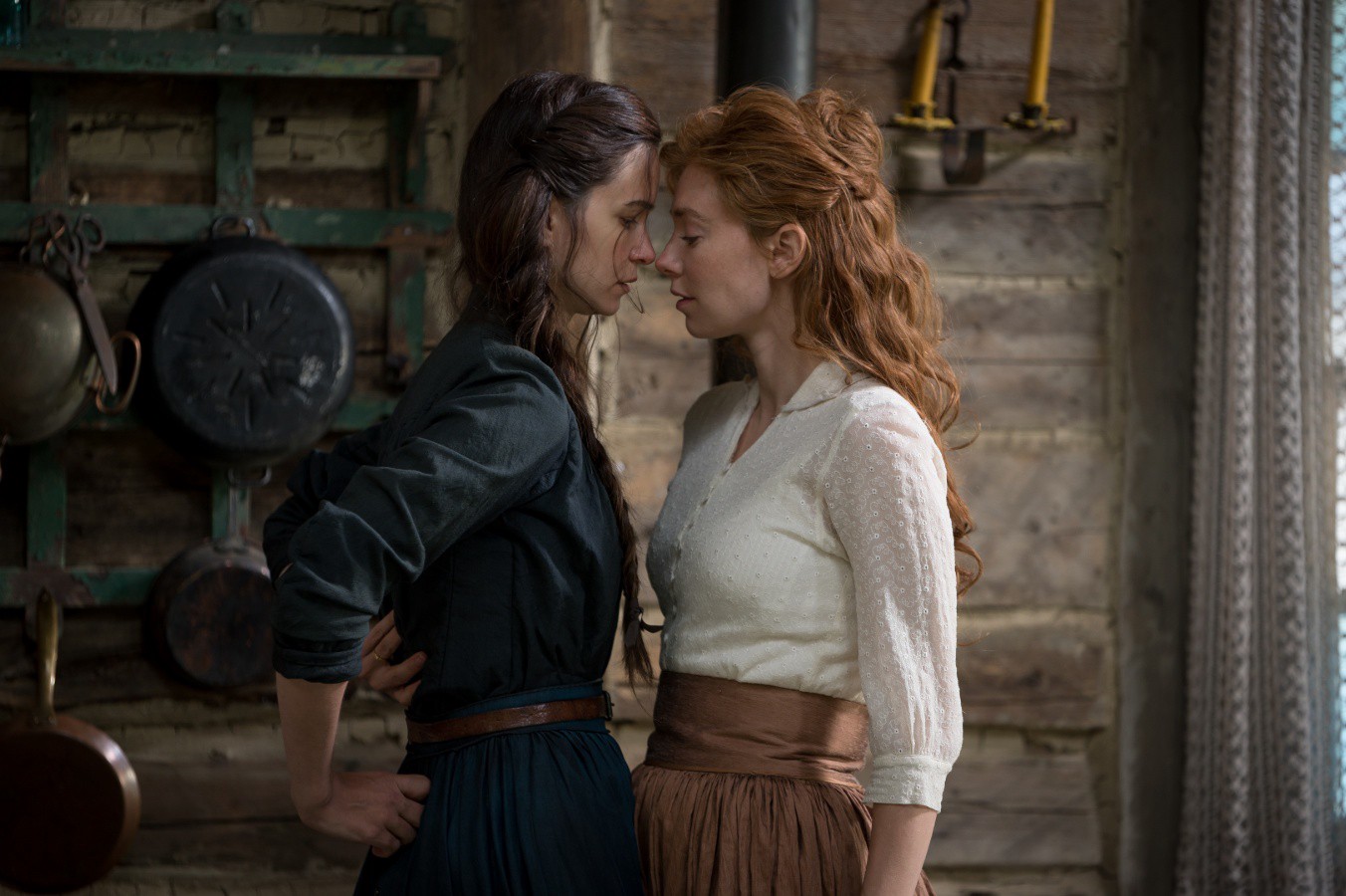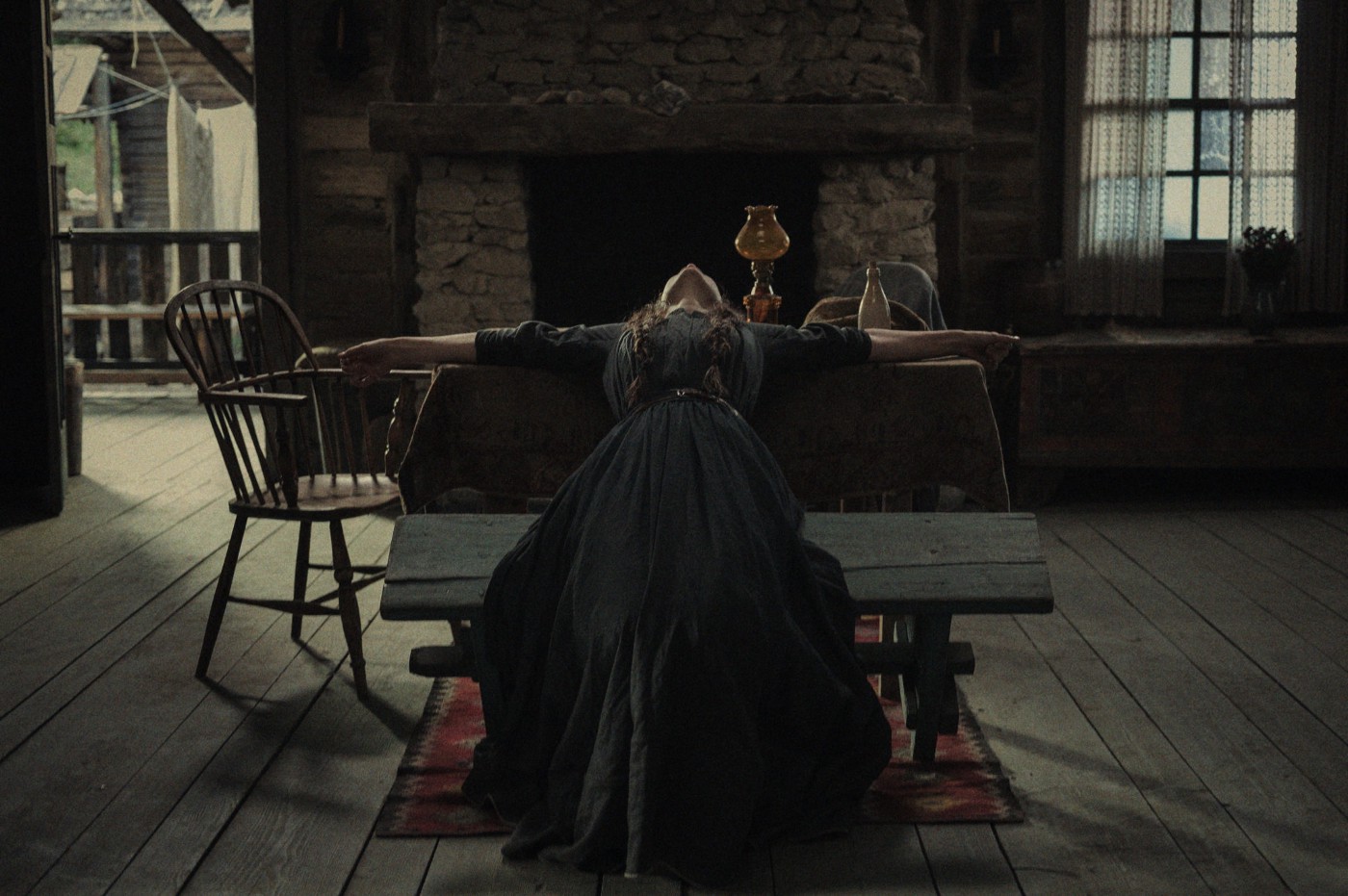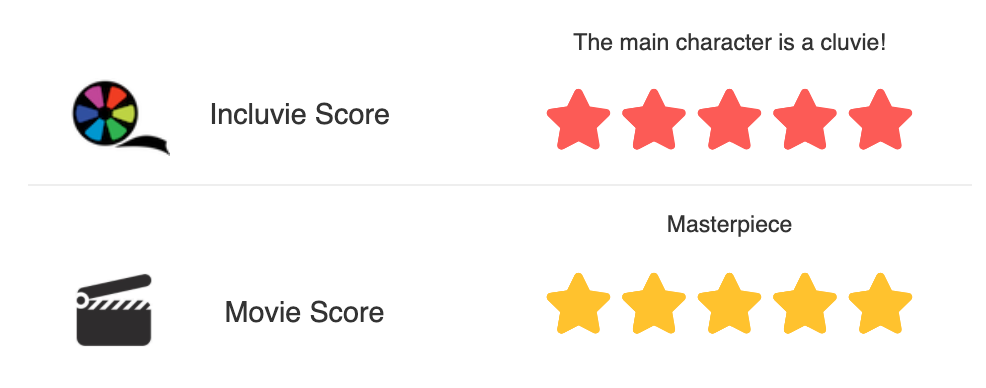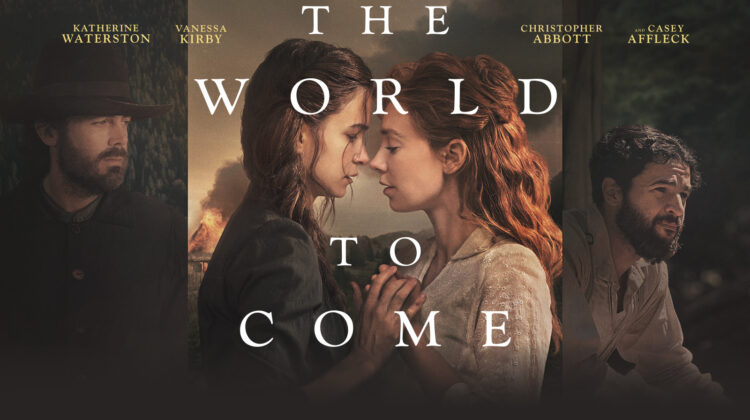The World to Come (2021) is an astonishingly beautiful love story. Mona Fastvold’s nineteenth century lesbian romance is emotionally charged, restrained, and poetic without feeling forced. Helped along by the incredible performances of its cast and its gorgeous visuals, the film tells a story of isolation and connection, bleakness and joy.
The World to Come is focused on two couples working hard just to survive on the American East Coast frontier in the 1850s. Abigail (Katherine Waterston) and husband Dyer (Casey Affleck) have recently lost a daughter to diphtheria, and they’re struggling with grief that leaves no room for closeness between them. Tallie (Vanessa Kirby) and her unrelenting husband Finney (Christopher Abbott) have begun renting a farm close by. When Abigail and Tallie meet they form an instant connection, a stark contrast from their previous isolation.

The film is narrated by diary entries from Abigail. The poetic narration is beautifully worded and performed and gives a deep view into Abigail, who is not an outwardly emotionally effusive person. Katherine Waterston’s voiceover narration of the diary entries is just one part of her stunning performance. Her Abigail is quietly desperate — intense yet controlled, at different moments achingly lonely, joyful, anguished. Vanessa Kirby, too, gives a remarkable and passionate performance.
From the moment that the two first lock eyes, the chemistry between Abigail and Tallie is the most striking element of the film. Their strong, clear connection adds to the tension that underscores the entire film. The two light up when together and you can feel their ache for each other when separated, a separation that is made necessary at times due to the unyielding land and at times due to their husbands. The tension at moments in the film, driven by the relationship between Abigail and Tallie and their relationships with their respective husbands, is so palpable it feels as if you could cut through it with a knife.

The World to Come is visually stunning, using gorgeous natural imagery. The world of the film is often bleak and sparse, yet it’s captured very beautifully. Its overall atmosphere alternates between coldness and warmth with an underlying darkness, which adds to the fiery nature of the film and its central relationship. The film’s visuals also work with the soundtrack to create an incredibly atmospheric film.
As a lesbian period romance, it’s easy to draw comparisons between this and other recent films of a similar nature, such as Portrait of a Lady on Fire (2019) or Ammonite (2020). In fact, a criticism of recent films that depict lesbian couples is that far too many of them are period pieces that only show white women. I certainly agree with this and wish that recent lesbian films depicted more diverse relationships, as well as modern couples. However, despite the fact that The World to Come falls into the same category as so many current films, I am happy that it was made, as it’s a gorgeous film.
For a beautiful love story that looks at isolation, grief, loss, and longing, I would recommend The World to Come.

Movie Review originally published by Maddie Rehrman on February 15, 2021.

Comments